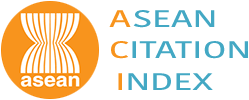Uterine Prolapse in Postmenopausal Women in the Coastal Areas
Prolaps Uteri pada Perempuan Postmenopause di Daerah Pesisir
Abstract
Objective: To assess the characteristics of postmenopausal women in the coastal areas that experience uterine prolapse.
Methods: This was a retrospective descriptive study conducted at Alpha Gynecology Clinic in Kendari. Samples
are cases of uterine prolapse from coastal areas that visited in January to December 2017. Samples were taken by consecutive sampling. The diagnosis of uterine prolapse is based on the Pelvic Organ Prolapse Quantification system. Data is presented with tables and narration.
Results: There were 21 respondents who experienced uterine prolapse. Most respondents were aged 61-70 years (42.8%), work as housewives (71.4%), parity more than 4 (85.7%), and duration of menopause >5 years (100.0%). The most common complaint at the fi rst time was a feeling of a lump in the vagina (81.0%), in the third degree of uterine prolapse (57.1%), and accompanied by comorbidities (66.7%).
Conclusions: Uterine prolapse in postmenopausal women in the coastal areas was found in housewives, aged 61-70 years, grande-multiparous, and duration of menopause >5 years. The main complaint was felt a lump in the vagina, in the third degree and accompanied by comorbidities. Counselling, information and education regarding symptoms and management of uterine prolapse need to be done.
Keywords: coastal areas, postmenopausal women, uterine prolapse.
Abstrak
Tujuan: Mengetahui karakteristik perempuan postmenopause di daerah pesisir yang mengalami prolapsus uteri.
Metode: Penelitian ini bersifat deskriptif retrospektif yang dilakukan di Klinik Ginekologi Alfa di Kendari. Sampel adalah kasus prolapse uteri yang berasal dari daerah pesisir yang berkunjung pada bulan Januari sampai Desember 2017. Sampel diambil secara consecutive sampling. Diagnosis prolapsus uteri berdasarkan sistem Pelvic Organ Prolapse Quantification. Data disajikan dalam bentuk tabel dan narasinya.
Hasil: Hasil penelitian menunjukkan terdapat 21 responden yang mengalami prolapsus uteri. Responden terbanyak berusia 61-70 tahun (42,8%), pekerjaan sebagai ibu rumah tangga (71,4%), paritas lebih dari 4 (85,7%), dengan lama menopause lebih dari 5 tahun (100,0%). Keluhan yang paling sering dialami pada saat pertama datang adalah terasa ada yang mengganjal di jalan lahir (81,0%), dengan diagnosis prolapsus uteri derajat 3 (57,1%), dan disertai penyakit penyerta (66,7%).
Kesimpulan: Prolapsus uteri pada perempuan postmenopause di daerah pesisir ditemukan pada ibu rumah tangga, usia 61-70 tahun, grande multipara, menopause >5 tahun. Keluhan utama terasa ada yang mengganjal di jalan lahir disertai penyakit penyerta, dengan diagnosis prolapse uteri derajat 3. Perlu dilakukan penyuluhan, konseling dan edukasi mengenai gejala dan penatalaksanaan prolapsus uteri.
Kata kunci: daerah pesisir, prolaps uteri, perempuan postmenopause.
Downloads
Copyright (c) 2020 Indonesian Journal of Obstetrics and Gynecology

This work is licensed under a Creative Commons Attribution-NonCommercial-ShareAlike 4.0 International License.













